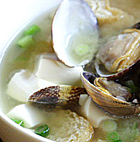
The act of eating involves more than the sense of taste. We also use the senses of smell, touch, sight and hearing to judge and critic the food in our plate. Of course the sense of taste is the most important sense involved in eating.
Our sense of taste contains the obvious tastes of sweet, sour, salty and bitter. But now we hear about a fifth taste from the top chefs and food connoisseurs. The fifth taste in our food is Umami.
While I was travelling across continents this summer I stumbled across a magazine which talked again about the fifth taste. This triggered my memory of the conversation I had a year ago with a connoisseur and food enthusiast who described the unique taste of umami and let us sample a few cheese and crackers in a party and try to taste umami!
But what is umami and how did it come in to being? This question had led to a detail research on my part which I share with now.
Rooted back to Japan, Umami is savory taste imparted by glutamate, an amino acid and 5 ribonucleotides which include insolate and guanylate. It naturall occurs in many foods like meat cured ham, fish, dried seafood, vegetables like shititake mushrooms,asparagus and tomatoes, beans and grains and dairy products like cheese. The taste of umami is very subtle and cannot be recognized by many when they eat it, but umami plays an important role in making the food delicious.
In 1908, a Japanese scientist Dr. Kikunae Ikeda undertook research to ascertain and isolate the true nature of the ‘deliciousness’ in Kelp/Kombu. Ikeda succeeded in extracting glutamate from kelp and discovered that glutamate (or glutamic acid) was the main active ingredient in kelp/kombu and coined the term ‘umami’ to describe its specific taste. Since then umami has been known in Japanese cuisine. Now this taste is spreading across countries and cuisines.



